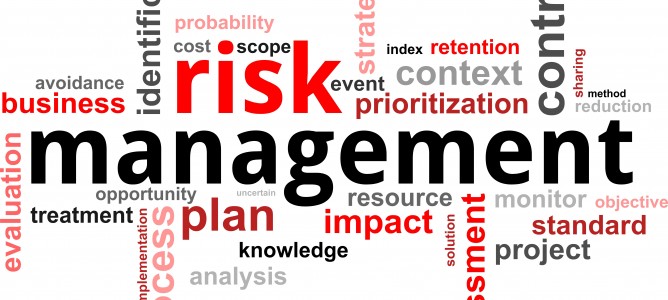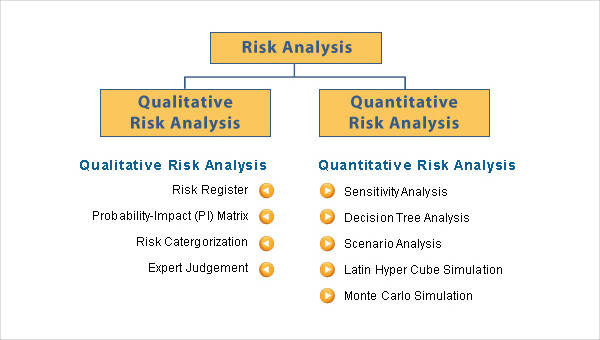Almost every decision regarding business involves risk. Therefore, Risk is the probability of something going wrong and leading to negative results, if it does. Sometimes this is small, and sometimes it’s large, and the result can be severe.
That is why weighing up a risk before you make a decision is so important. If you understand it well, you will be much more prepared to handle it.
WHAT’S IN IT
What is Risk Analysis and Risk Management?
Firstly, You can design risk analysis and management process to help the organizations avoid or reduce the risks.
Risk analysis and management is the process of identifying the risk of harming projects.
Risk analysis is a lengthy process because you need to get information such as planning, accounting, marketing, and other relevant information.
However, it is an important planning tool, which can save time, money, and fame.
Steps of Risk Analysis and Risk Management

Conducting a risk analysis is the best way to make sure your decisions are reliable and well-considered.
Risk Assessment and Management
Firstly, get information from the heads of departments and their managers. Risk assessment is the first way to start recording specific risks or threats in each department. Collecting the necessary information is a significant step in the risk assessment process.
The risk management structure is designed to find out the project risk at the beginning of the project.
Risk Identification
Firstly, you must identify your threats. They may have come from anywhere. For example, what happens if your computer system fails? What if a team member becomes ill? or what if the primary supplier disappoints you? Make a note of these and spend enough time identifying everything that might go wrong.
Use the following suggestions to identify the risks.
Risk Sources
Risk repository, checklist, Expert judgment, and project status are sources of risk identification. These sources provide the following data
- The list of risks identified in completed projects.
- Checklist of risk identification questionnaires.
- Interview with experts and stakeholders.
- To know the project status from the information collected through meeting reports, progress reports, and quality reports.
Risk category
The type of risk events is provided in the risk category. Some of the categories of risk are technical, external, organizational, and project management. This category includes the data collected from technology, performance, customers, market, logistics, budget, planning, and estimation.
Analyze the Risk
Once you have this list, you need to evaluate it to assess the value of each risk. Multiply the probability of each event and how much it will cost to set things right. It gives you value for each chance.
Therefore, the Probability of risk measures from low expectation to high likelihood of risk occurrence.
Similarly, calculate the impact of the risk, which is from low to high.
The time in which this risk will affect will be determined. This time should be near or far, which is count in months. Classify this timeframe risk according to project guidelines. It is also necessary to describe the cost, schedule, scope, and quality effects based on the risk’s nature.
Action Plan for Risk
There is no other way to reduce the risks of the project. Manage the different types of risk strategically in the long run. Therefore, To develop an action plan to minimize the risks.
These action plans should include the risk description with risk assessment. It should also include information about taking action to reduce the risk. All risk planning should be assigned to the person identified to maintain the action plan.
Make the record of each risk in the register with the permission of shareholders in agreement. These records should be check and confirmed by the manager.
Especially, The trigger indicates that risk has occurred in the past, and it should retake the place. The trigger detects risk or warning signs. Make a record of all triggers in the register.
The project manager is responsible for managing all the risks in the project.
Manage Your Risk

Next, you need to manage significant risks, and there are several ways to do this. Ask yourself, ‘Is there anything I can do to eliminate them? What assets can I use to deal with them? And Can I come up with a contingency plan to minimize their effects?
The main goal of risk analysis and management is to apply the necessary precautions and reduce the risks. To start with a high priority, fix or mitigate each risk so that it is easy to remove threats. The project manager is responsible for managing all the uncertainty in the project.
Once you’ve completed your risk analysis and worked out how you will handle inverse events, you will want to carry out frequent reviews.
Risk Monitoring and Control
It means that you need to check your risk analysis from time to time to ensure that nothing has changed. Also, you will check your systems and plans regularly.
Formal risk analysis is useful when you have to make a significant decision because it helps you analyze the threats you are facing and come up with plans to deal with them.
Risk review is a repetitive process that uses progress reports and delivery status to monitor and control risks. It includes quality reports, progress reports, follow-up reports, and various status reports beyond that.
Qualitative Risk Analysis
The quantitative or qualitative are the two main approaches to risk analysis. The Qualitative risk analysis usually involves assessing the probability of a risk arising based on subjective characteristics and using predefined ranking criteria that have an impact on the organization. The effect of a threat is usually divided into three categories: low, medium, or high. The probability of a risk is expressed or classified in the same way as the probability of 0% to 100%.
Classifying risks in this way can help organizations and project teams determine which risks can be considered the lowest and which should be strictly controlled to minimize the impact on the business or project.
Qualitative risk the analysis gives good results because it collects data from customers in the risk analysis process based on perceptions of the potential risks.
Quantitative Risk Analysis

The most thoughtful inputs and random variables are included in the risk model.
The risk model is created using the simulation statistics to assign numerical values to the risk. The evaluation of the project risk in quantitative risk analysis is usually performed after a qualitative risk analysis. The Quantitative risk analysis analyzes the chances of each threat, and its results numerically.
The goal of quantitative risk analysis is to associate a certain amount for each risk, representing the potential cost to the company if that risk occurs.
Therefore, a quantitative risk analysis can be done by the organization. The company affected by the data breach can quickly determine the financial impact of the event on its actions.
The organization gets more objective information from quantitative risk analysis than qualitative risk analysis. Thus, it helps to make the best decision-making process.
Conclusion
In conclusion, Risk management has become extremely challenging in project management. While we cannot predict the future, we can implement a systematic and straightforward risk management process to find uncertainties in projects and reduce the risk.
Risk management not only helps to prevent risk but also helps to learn from past mistakes. So, That improves the chances of successful project completion.
That is not the whole process of risk management. It is a continuous learning process that can improve and increase our process efficiency.
Also you also read our blog on Prospect Theory- An analysis of decision under Risk and Uncertainty
FAQ’s
The main four types of risk are an operational risk, regulatory and compliance risk, financial risk, and strategic risk. These risks also classified into two types, such as Business risk and non-business risk.
If the risk in the projects can be identified, it is required to manage and control that risk. Firstly, We have to avoid that risk by taking precautions before the project begins. At the time of work, we can reduce the risk by optimizing them. And finally, we can accept the risk and solve them.
The following are the key elements of risk management: Identify Risk, Risk Assessment, Measure Risk, Evaluate Risk, Mitigate Risk, Monitor Risk.
The purpose of risk management is to identify the risk occurred in the project. Risk management is a continuous process throughout the completion of the project.



